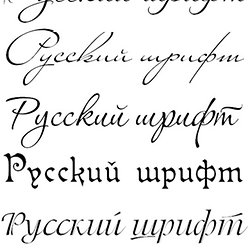This fortran 90 program implements Bisection method to find the root - bisectionwithoutdoloop.f90.
9.4 Numerical Solutions to Differential Equations This section under major construction. Solving differential equations is a fundamental problem in science and engineering. A differential equation is. For example: y' = -2y, y(0) = 1 has an analytic solution y(x) = exp(-2x). Laplace's equation d 2φ/dx 2 + d 2φ/dy 2 = 0 plus some boundary conditions.
Sometimes we can find closed-form solutions using calculus. However, in general we must resort to numerical approximations. ODE = differential equation in which all dependent variables are a function of a single independent variable, as in the first example. PDE = differential equation in which all dependent variables are a function of several independent variables, as in the second example.

Euler method. In the 18th century Leonhard Euler invented a simple scheme for numerically approximating the solution to an ODE. Given a first order ODE of the form dy/dx = f(x, y) subject to the initial boundary condition y(x 0) = y 0, we estimate the function y(x) over a regular sample of values x n = x 0 + hn. The parameter h is referred to as the step length. If y n is the approximation to y(x) at x n, then we can approximate the gradient at x n by f(x n, y n).
We estimate y n+1 by assuming the gradient remains constant in the interval between x n and x n+1. This leads to the following method: The smaller we make h, the more accurate the approximation. But this comes at the expense of more computation. The associated truncation error can be formalized by comparing the above estimate with the Taylor series approximation We see that the truncation error is approximately O(h 2). If the errors are cumulative (conservative assumption), then the total error from x 0 = 0 to x n = 1 is O(h). Called a first-order method. To keep relative error below 1E-6, we must do 1 million steps.
Note if the step size is too big, then Euler's method becomes unstable. Lorenz attractor. The Lorenz equations are the following system of differential equations Program uses Euler method's to numerically solve Lorenz's equation and plots the trajectory (x, z). Program plots two trajectories of Lorenz's equation with slightly different initial conditions.
This perturbation eventually leads to significantly different behavior. This is the origin of the so-called butterfly effect. Here's a good. Runge-Kutta method. Euler's method not used in pratice because truncation error per step is relatively large compared with other methods.
Also Euler's method becomes unstable if step size is too large. Euler's method only uses first derivative information at beginning of step. Runge-Kutta method samples derivative at several points in interval. Tradeoff between computing the function f(x, y) and increased accuracy. The 4th order Runge-Kutta method is a popular sweet spot. It's a fourth order method. N-body simulation.
Sir Isaac Newton formulated the principles governing the the motion of two particles under the influence of their mutual gravitational attraction in his famous Principia in 1687.  However, Newton was unable to solve the problem for three or more particles.
However, Newton was unable to solve the problem for three or more particles.
Indeed, systems of three or more particles can only be solved numerically. We will describe a classic numerical solution that is widely used to study complex physical systems in cosmology, plasma physics, semiconductors, fluid dynamics and astrophysics. Scientists also apply the same techniques to other pairwise interactions including Coulombic, Biot-Savart, and van der Waals.
We first review Newton's mathematical model describing the movement of the planets. Newton's law of universal gravitation asserts that the strength of the gravitational force between two particles is given by F = Gm 1m 2 / R 2, where G is the universal gravitational constant, m 1 and m 2 are the masses of the two particles, and R is the distance between them. The force is vector quantity, and the pull of one particle towards another acts on the line between them. Newton's second law of motion F = ma relates the force to the acceleration. Let m i denote the mass of particle i and let r i denote its position vector (as a function of time t).
Combining Newton's two laws, we obtain a system of differential equations which characterize the motion of the particles Since a particle's acceleration only depends on the positions of other particles and not of their velocities (as might be the case of particles in an electromagnetic field), we can use a specialized numerical integration method known as the leapfrog finite difference approximation scheme. This is the basis for most astrophysical simulations of gravitational systems. In this scheme, we discretize time, and increment the time variable t in increments of the time quantum dt. We maintain the position and velocity of each particle, but they are half a time step out of phase (which explains the name leapfrog). The steps below illustrate how to evolve the positions and velocities of the particles. Here James M.
New News
- Cimatron E12 Full Crack Idm
- Ustanovka Printera Canon Lbp 800 Dlya Windows Xp
- Silence Taiwanese Drama Torrent
- Fleet Maintenance Pro 14 Serial Numbers
- Download Prison Break Season 3 Kickass Torrent
- Islamic Architecture 3d Models Free Download
- Quick Report Delphi 2010 Gratis
- Kodi Na Gta San Andreas Super Kars Na Russkie Mashini
- Mortal Kombat 9 Komplete Edition Pc Download Free
- Kimia Dasar 1 Universitas Pdf
- Gym Motivation Mp3 Songs Free Download
- Kimia Organik Fessenden Ebook
- The Steve Harvey Show Torrent Download